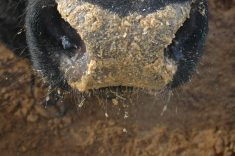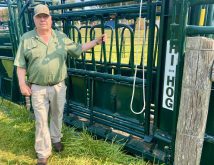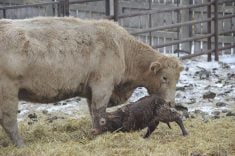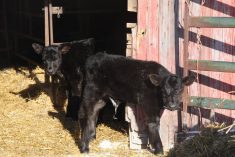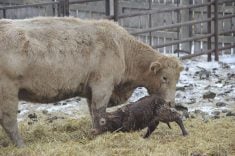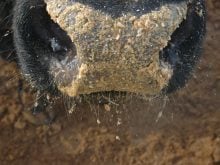A bull’s testicles, penis and scrotum need to be checked regularly by a veterinarian to ensure they can still do the job
A bull’s working life is usually four to five breeding seasons, but soundness examinations should be done annually to make sure everything is in working order.
When a veterinarian runs semen checks, the testicles and the penis are also scanned for injuries or abnormalities.
“No bull is totally perfect,” said veterinarian Roy Lewis.
Deviations are not that common, but more producers are noticing and reporting issues because some bulls are quite valuable.
Problems could be inherited or are the results of injuries.
Read Also

Using artificial intelligence in agriculture starts with the right data
Good data is critical as the agriculture sector increasingly adopts new AI technology to drive efficiency, sustainability and trust across all levels of the value chain.
Testicles are checked during a breeding soundness evaluation. Degeneration can be linked to fighting, injury, sickness or unknown causes.
There are three common scrotal shapes:
- Straight sided, which could be associated with small testicles and too much fat in the neck of the scrotum.
- Normal shape with a pendulous scrotum and a well defined neck for proper cooling.
- Wedge shaped, which is also associated with smaller testicles and too much fat that could inhibit thermoregulation and semen quality.
The scrotal skin should be smooth and elastic, and the testicles should move freely within it.
The international bull fertility conference held last May, which resulted in a published guide for bull breeding soundness, reiterated the relationship between scrotal conformation and semen quality.
Scrotal circumference is also highly correlated with testicular mass and adequate semen production, but circumference can vary by age and breed of bull.
Penis deformities are rare, but bulls should be checked in the spring, at which time potential injuries from the previous summer may be noticed, said Lewis.
A bull should not be certified suitable for breeding unless the penis has been seen during the examination.
A broken penis might occur when it is bent and breaks a blood vessel. It fills with blood, and the bull cannot get erect to breed. Corkscrew deviations may also be a result of that injury.
The animals can still urinate because the urethra is not damaged.
“If you rest them and catch them fairly quickly, there is a 50 percent chance they will heal by doing nothing,” Lewis said.
“As we have got more and more value in some of these bulls, it is worth resting them.”
A bull may have a persistent frenulum, in which there is a small band of tissue under the penis that looks similar to someone who is tongue tied. This attachment causes the penis to bend and can be painful. It can be clipped once it is identified.
This is often hereditary, so buyers should be told in advance.
Penile warts can be a type of herpes virus, but they are not contagious and the animals get over it. The warts can be removed surgically if necessary, but the procedure takes some advance planning, depending on the location. Warts are a possibility if blood or bloody discharge is seen coming from the penis. Blood in the semen may affect the viability of sperm, said Lewis.




